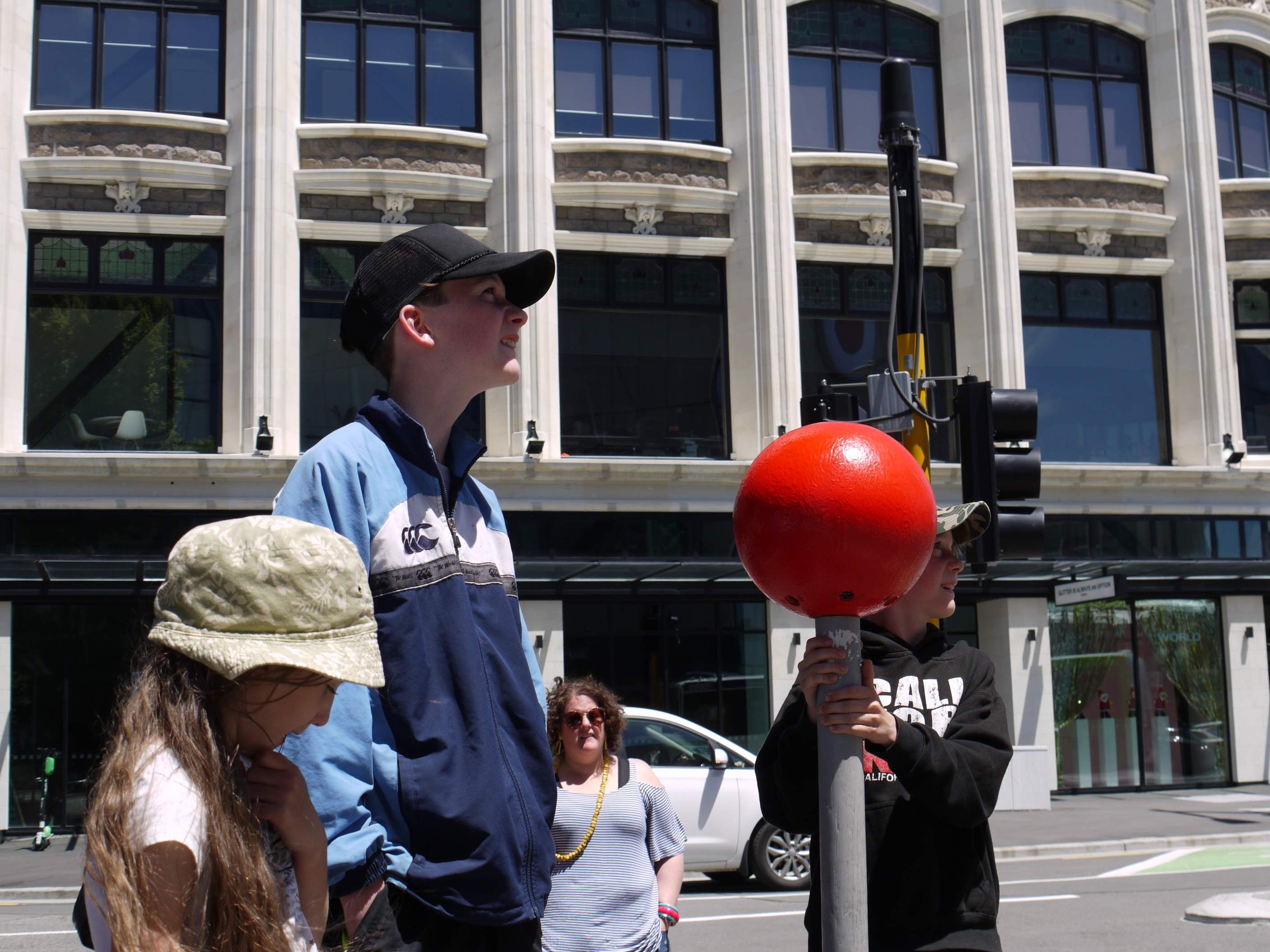This is my second shoot in relation to street photography When out on the streets of new Zealand walking around through the center of Christchurch, The Vodafone building had a space invaders game boy on the side of it. So from across the road you could control the screen to [lay the game. I thought this was a quite a good way of creating street photography because i had a clear focal point of my images while the environment was ever changing around it. With my camera for these images I switched between the landscape and portrait settings on the camera. I had my camera to a high shutter speed because of the ever changing urban landscape I was photographing. I has my white balance set to one of the automatic outdoor settings which created the perfect amount of contrast in my images.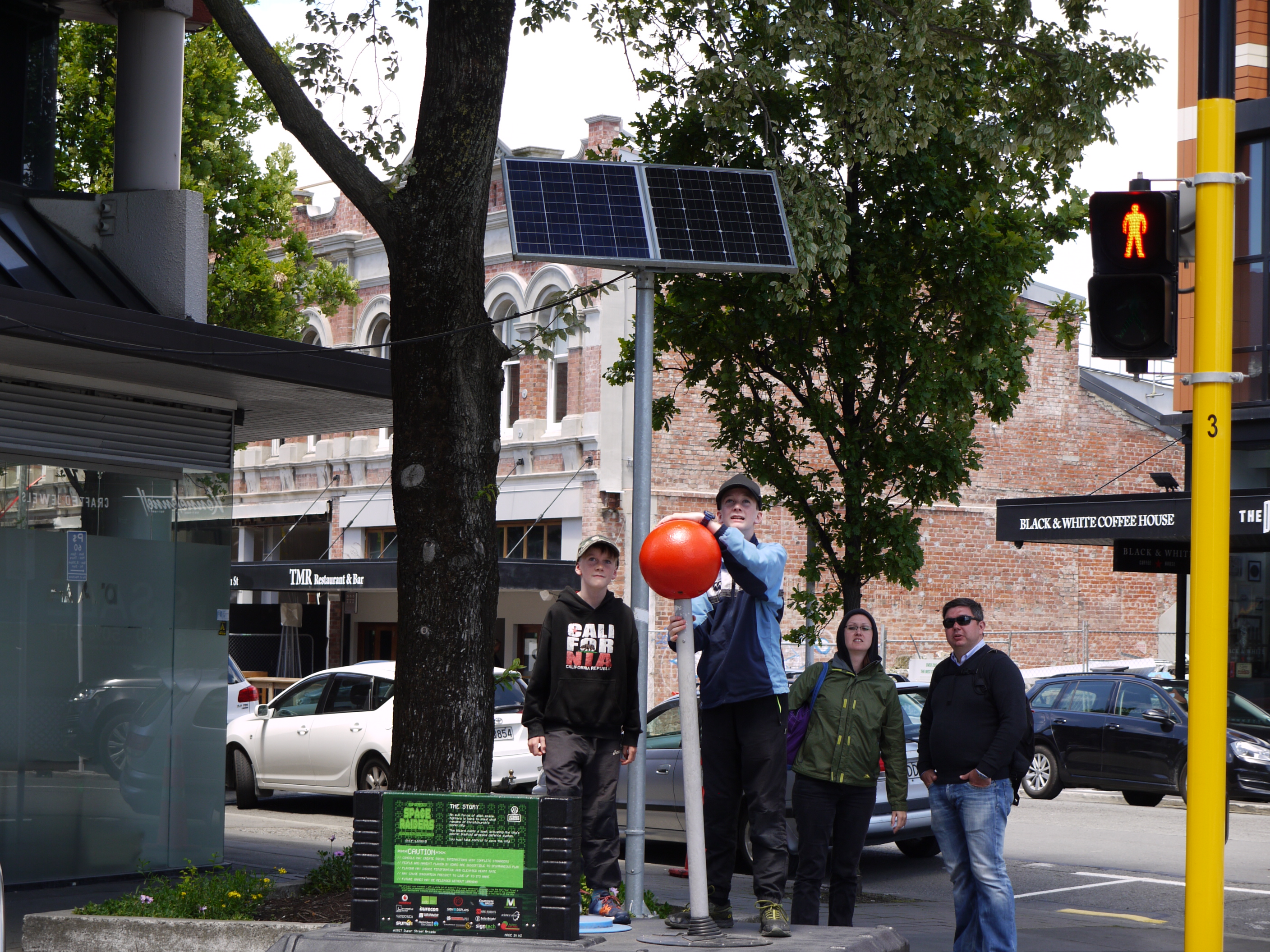
I chose to change to the other side of the road and capture images from behind creating more of a story and understanding within my images. This angle creates perspective within the images showing different view points. There are two main intentional view points for these images. They are the two boys on the game controllers and the space invaders screen on the side of the building. The image creates a contrast with in because there is a dark and light side to the image creating a more visually interesting image. The main tonal color pallets for this image consist of a range of blues. The two boys stand out because they are on a lighter background making the viewer being drawn the them when when looking at the image.
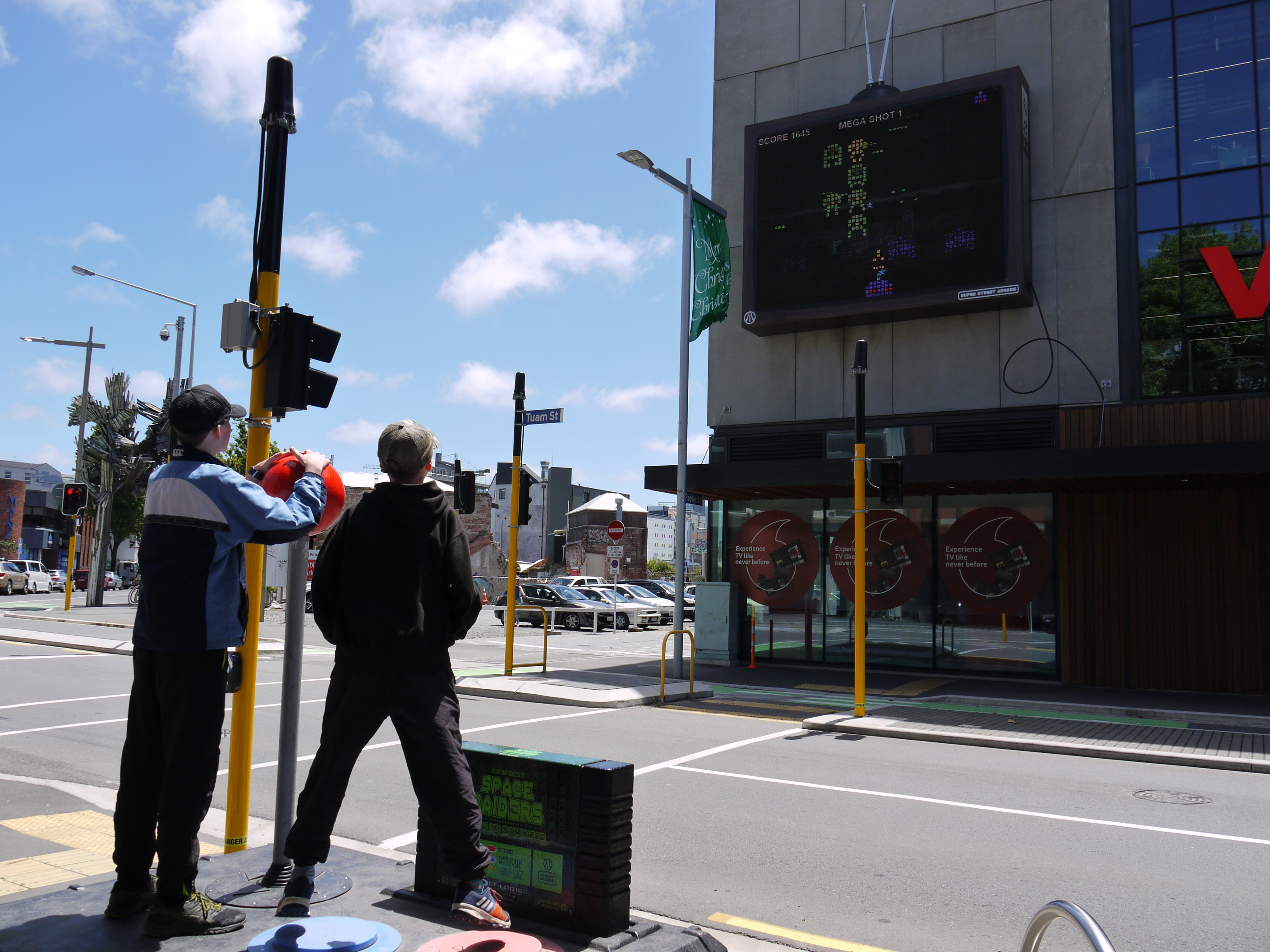
You can see how modern day to day life is just passing by as the images are being taken from the visual interactions from the cars and a little girl entering the images wanting to have a go. These images are all about capturing what is naturally happening right that second, unplanned/ unstructured.
For the next images i chose to change vantage points to capture the interest of the children and what is happening with them. To me these images turned out really well the colors are vibrant and there are no blurred images. There is a lot of vertical features within these images which create structural vantage points for the image. The buildings in the background give the image depth creating a clear flow through the image following the path of the road.
Again i moved positioning so that I could capture the general public behind and there reactions to how the kids were doing in the games and the next lot of children waiting for there turn.

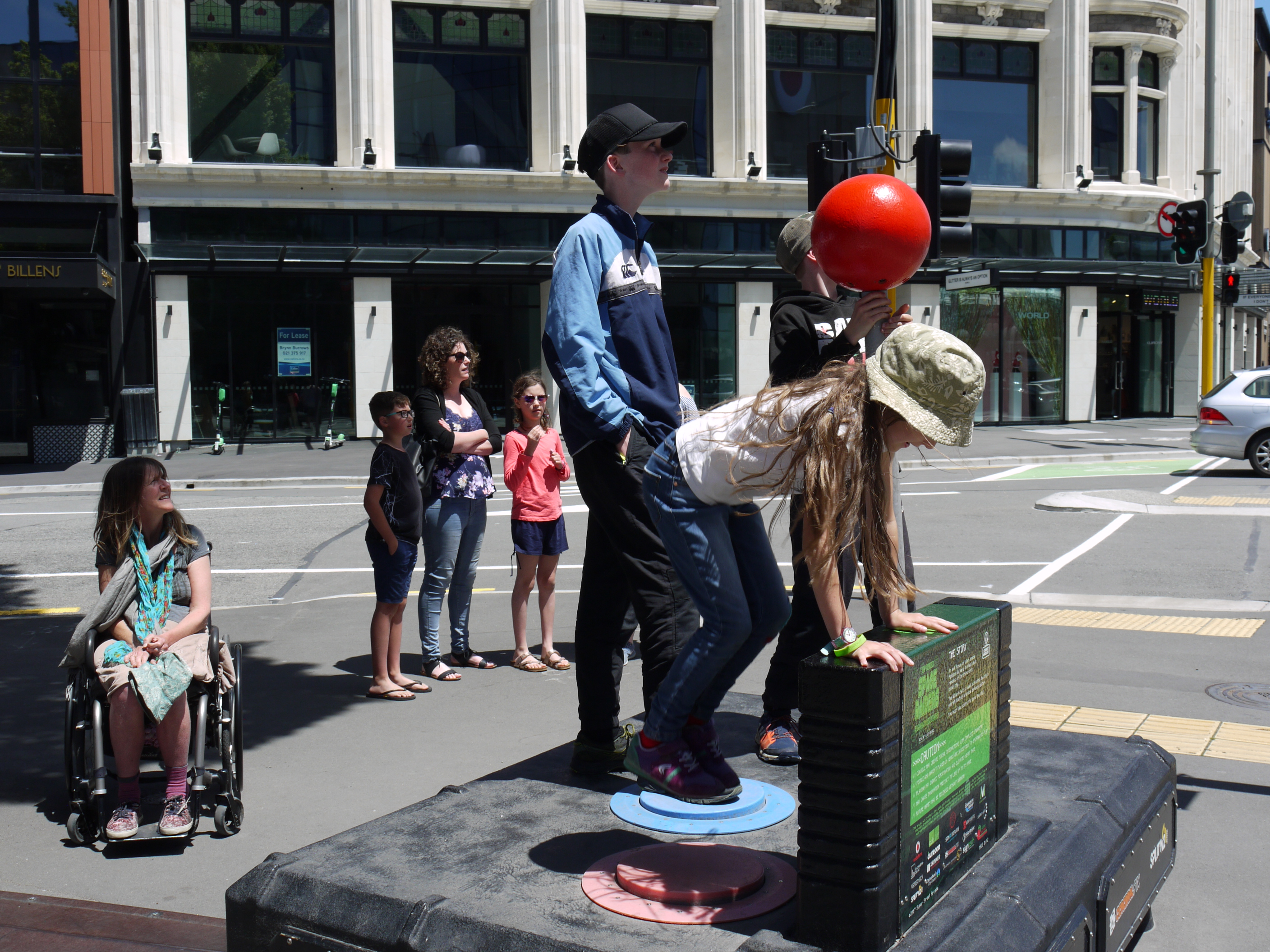
I chose to change angles so that i was behind the children can captured the Vodafone sign in the images. This gives the images context and gives the viewer more of an understanding as to why there are children playing giant space invaders near the side of the road. It also frames the picture crating a poster feel to the image or a advert for Vodafone. The contrast between the blue glass of the building and the red writing creates a focal point and main point of interest.
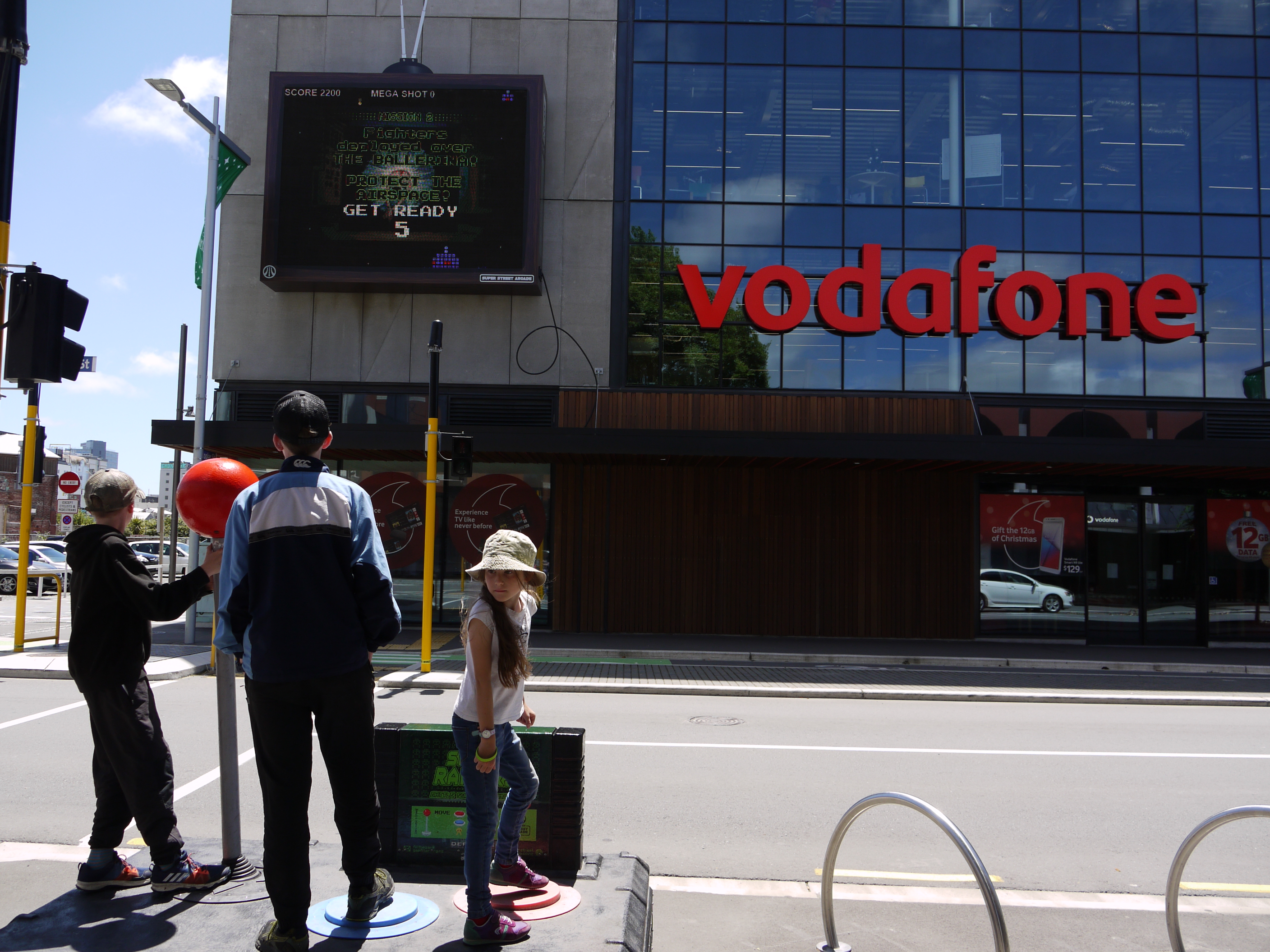

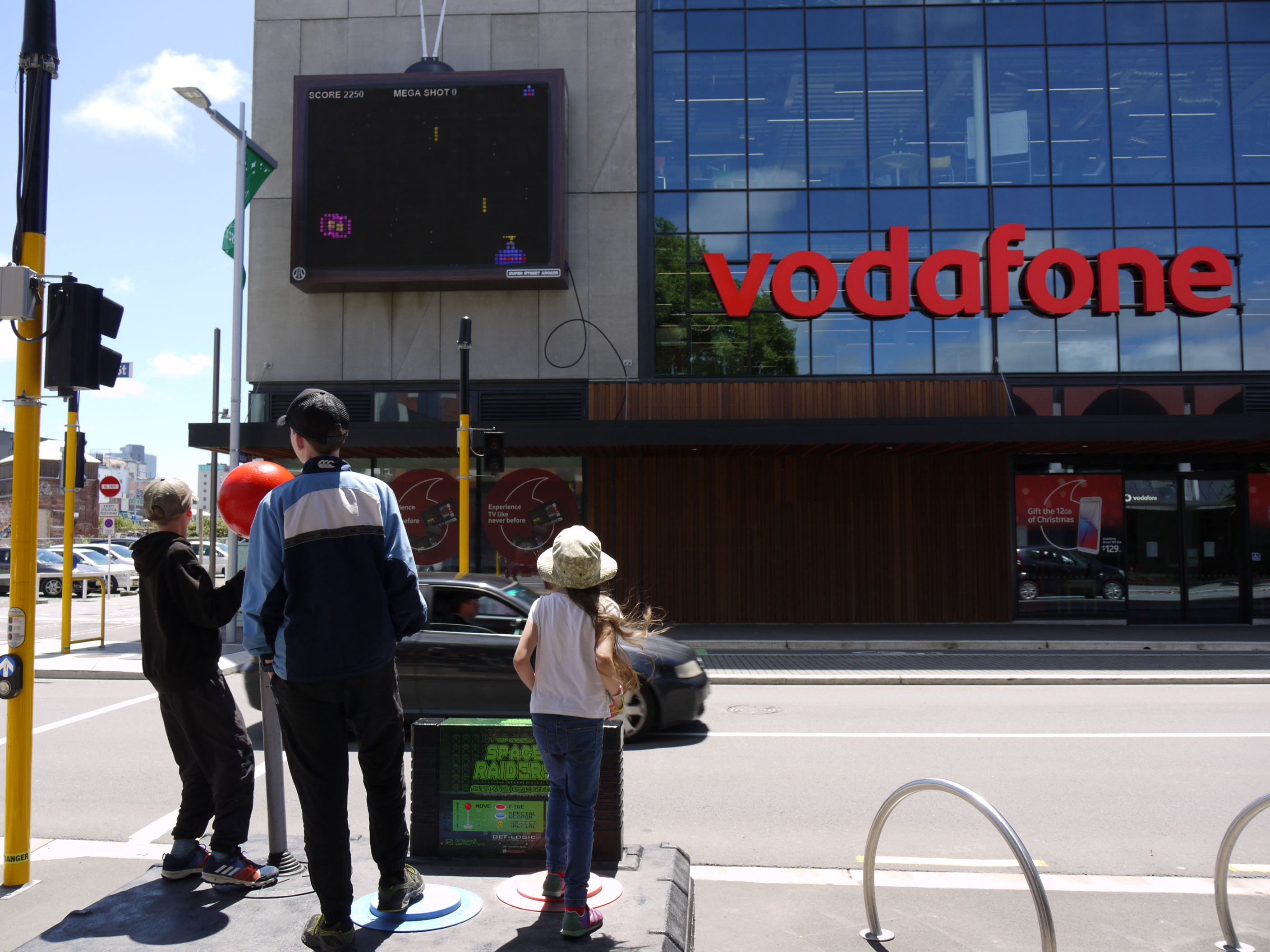
I wanted to capture the close up of the children's faces I used the portrait mode on my camera with a wide zoom lens to create the close up intimate feel towards the photos. These images were taken standing about 50 m away from the kids. I feel like these images are successful because you can see that they are clear and crisp the colors are bright and vibrant. I feel like the images create a real snap shot of what is actually going on and the children's real moods. You can see that I have changed the zoom of the lens in the images to create different out comes and see how the zoom effects the initial image. Creating a more diverse set of images.
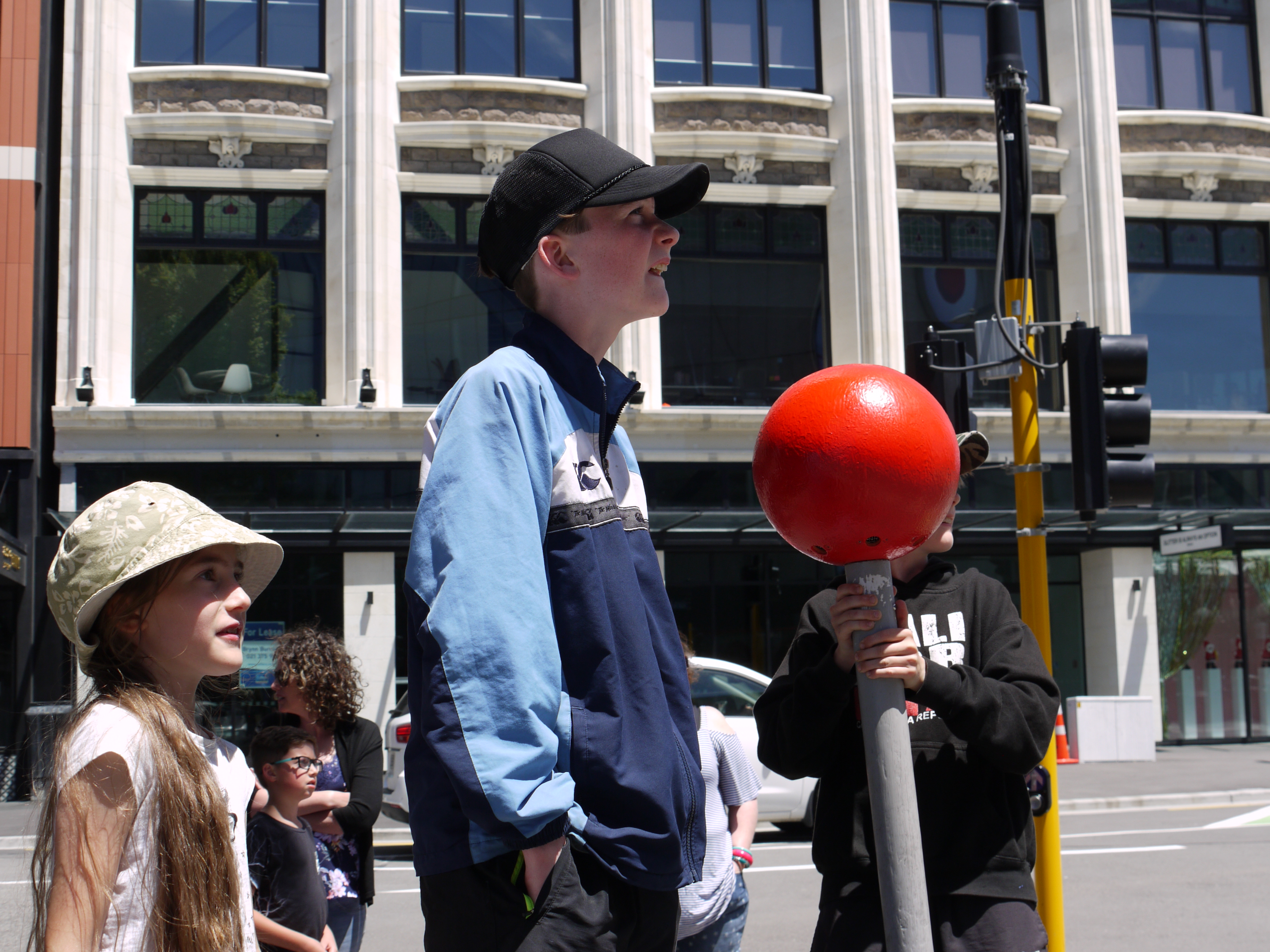
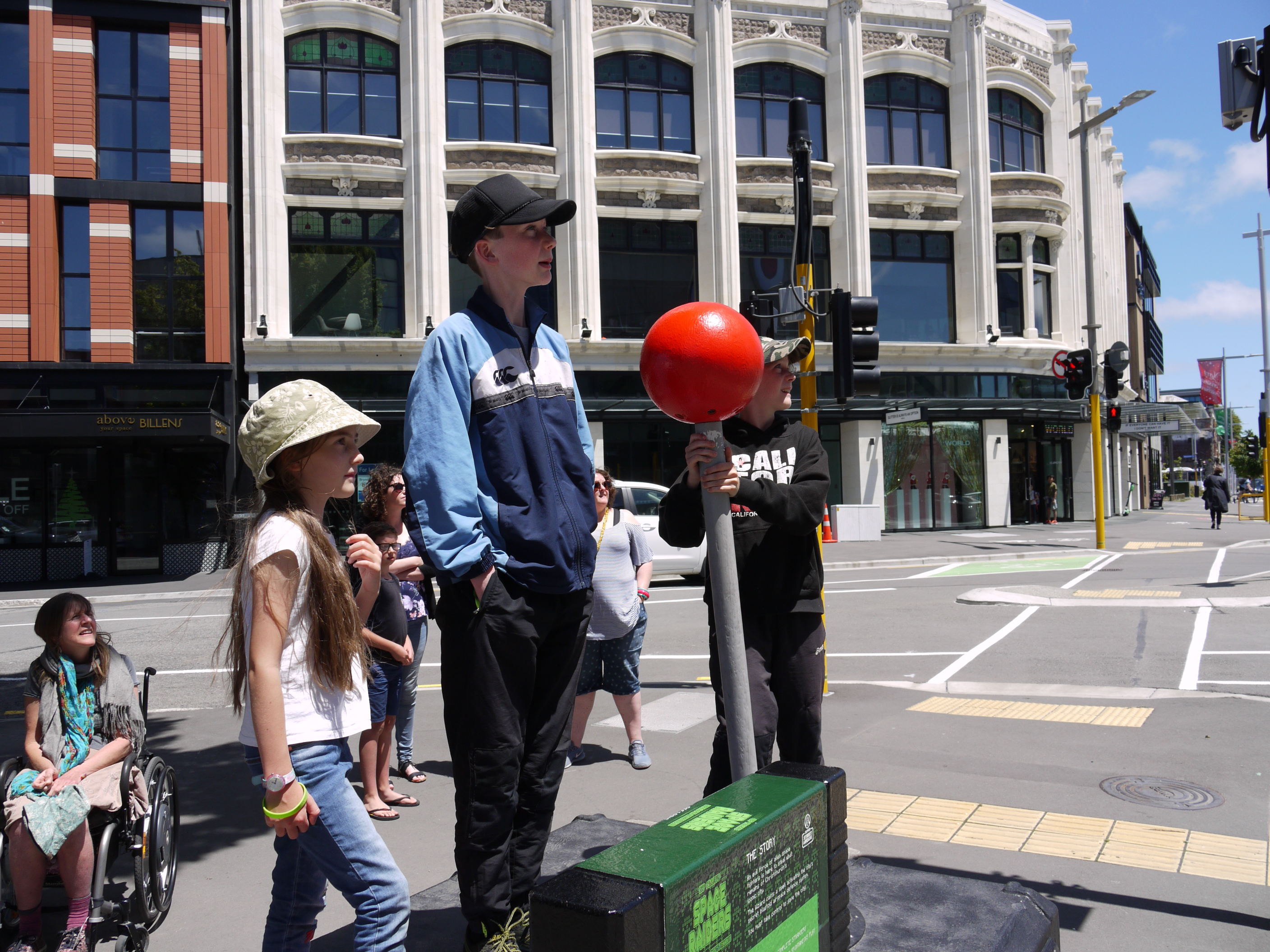
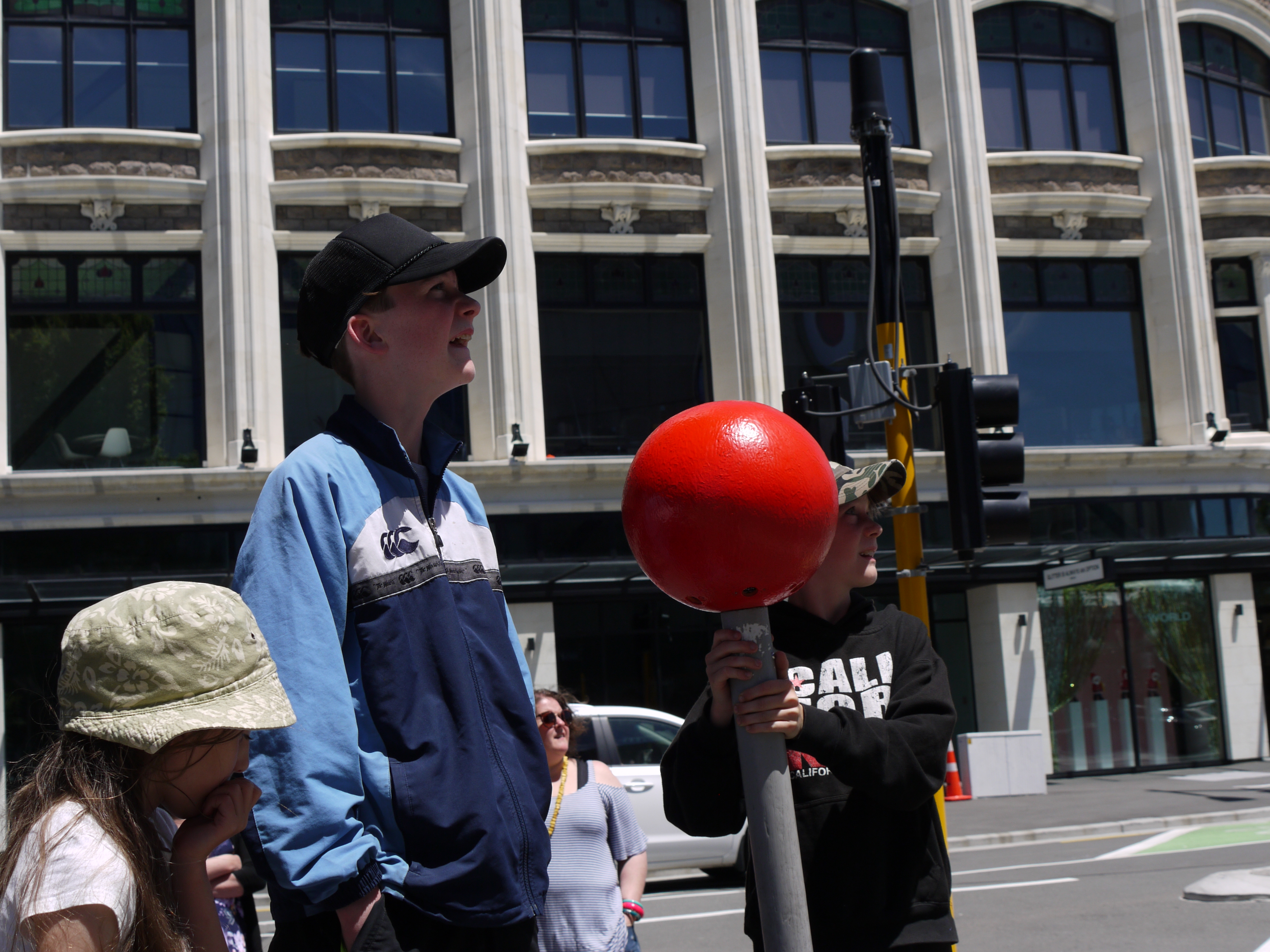
Category Archives: Uncategorized
Filters
Depth of Field and Focal points Experimentation
For an experimentation into focal length, AF/MF, focal points and depth of field, I took a variety of photographs using these techniques, so that I can compare them.
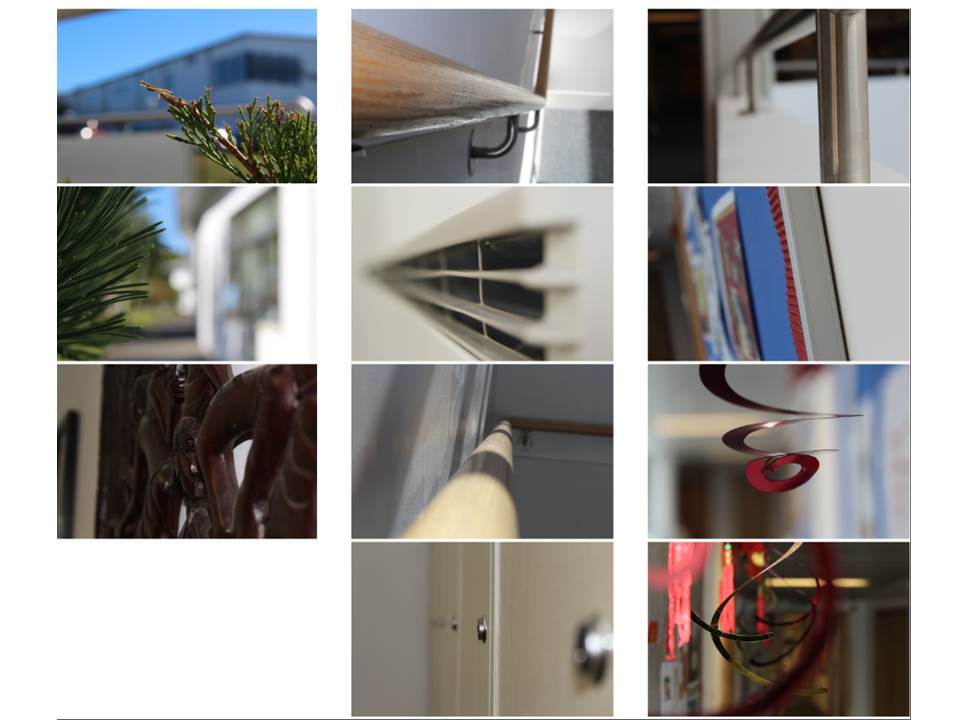
In the above gallery, the top 2 rows of images were taken using Auto-focus, where the camera automatically focused on a focal point, and the bottom 2 rows used manual focus, where I physically adjusted the camera lens in order to adjust the focus and focal point.
I discovered that using manual focus allows for more control over the focal point of the image, and overall allows for a the focal point of the image to be focused on more easily.
Street Photography
WHAT IS STREET PHOTOGRAPHY?:
Street photography, sometimes called candid photography is the conduction of photography, where photographers capture natural images, unmediated encounters with strangers on the street.
MOOD-BOARD:
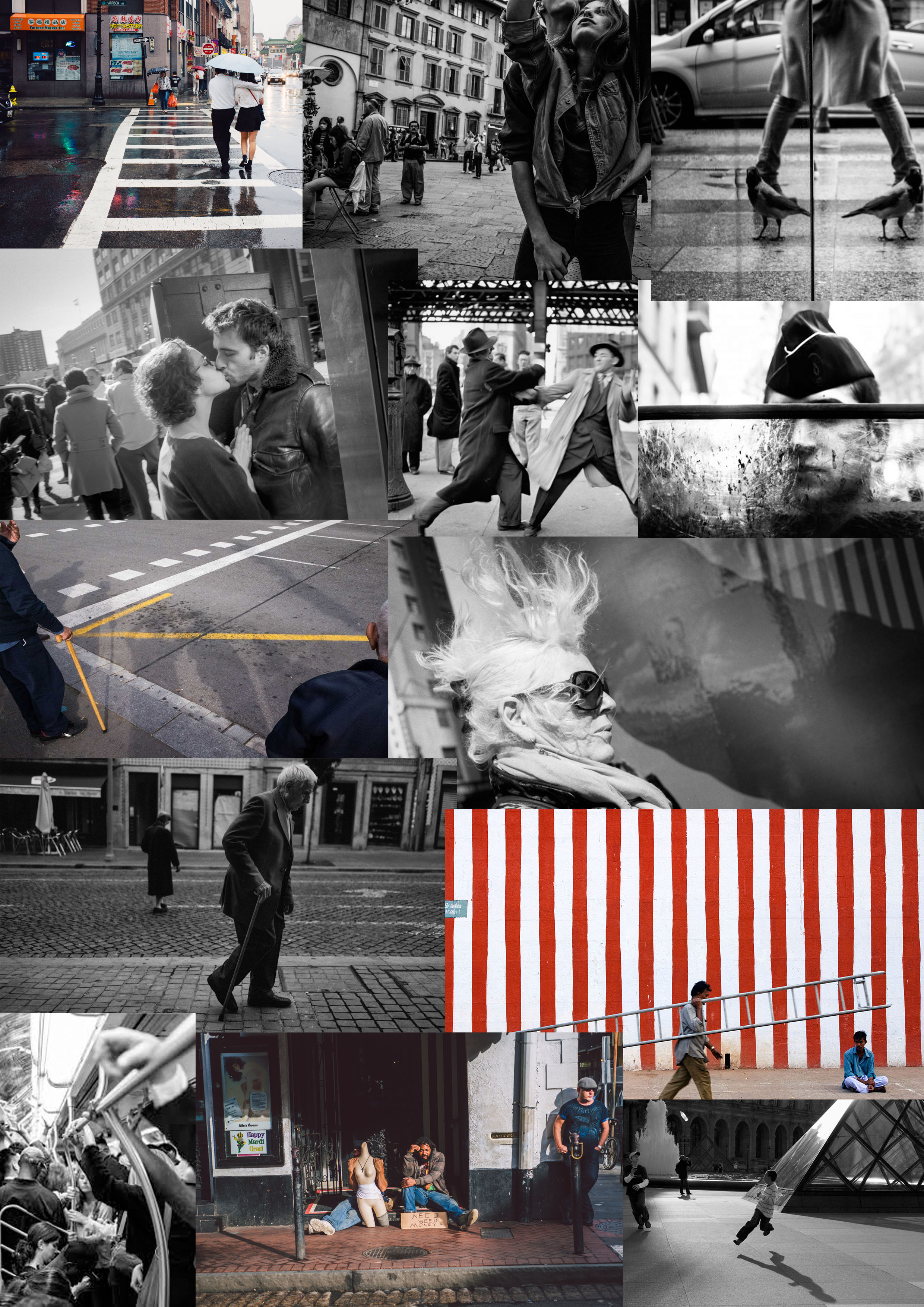
This is a collage of photos which all involve the use of street photography. TheyAround twenty years ago, street photography started to really sit up and get noticed. It was, of course, in the late 90’s that the first wave of consumer-focused digital cameras arrived – surely not a coincidence. Like the invention of the “Leica format” film (35mm), the digital camera, complete with its increased mobility, inspired a whole new generation of street shooters.
it is usually accepted that Eugene Atget is the rightful father of the street photography genre. Atget worked the streets of Paris beginning in the 1890s and continued into the 1920s. He was really the one to establish the street as a meaningful location for photography. Interestingly, his photography mainly consisted of non-human subjects. So there you go, the father of street photography made street photographs without people. So why is it so hard (and even discouraged) to do so today? A quote from Susan Sontag’s wonderful book, On Photography, will help us better understand. “Photographic seeing has to be constantly renewed with new shocks, whether subject matter or technique, so as to produce the impression of violating ordinary vision.” In other words, pictures of parks, store windows, and other non-human street subjects became too familiar to us, too common to disrupt our way of seeing in an artistic way. Of course, we are now in danger of having the street photograph of a person fall to the same fate.
Street Photography
Street photography is a category of photography that is not pre-planned or prepared and relies on chance encounters with people in public places as they go about their days. For this Photo shoot I went to Kings street in town and also visited liberty wharf/square, the market and Royal square. I chose these visitor hot spots as they are very popular with the public but also is a place where people act very naturally and can interact with the public.
I really liked doing this photo shoot as it allowed me to experience the bustling streets of St .Helier at times where I wouldn’t usually be able to experience that atmosphere. But during this photo shoot I felt a little bit guilty due to me photographing people when they were unaware that I was doing so, it felt like I wasn’t respecting their privacy and exposing them.
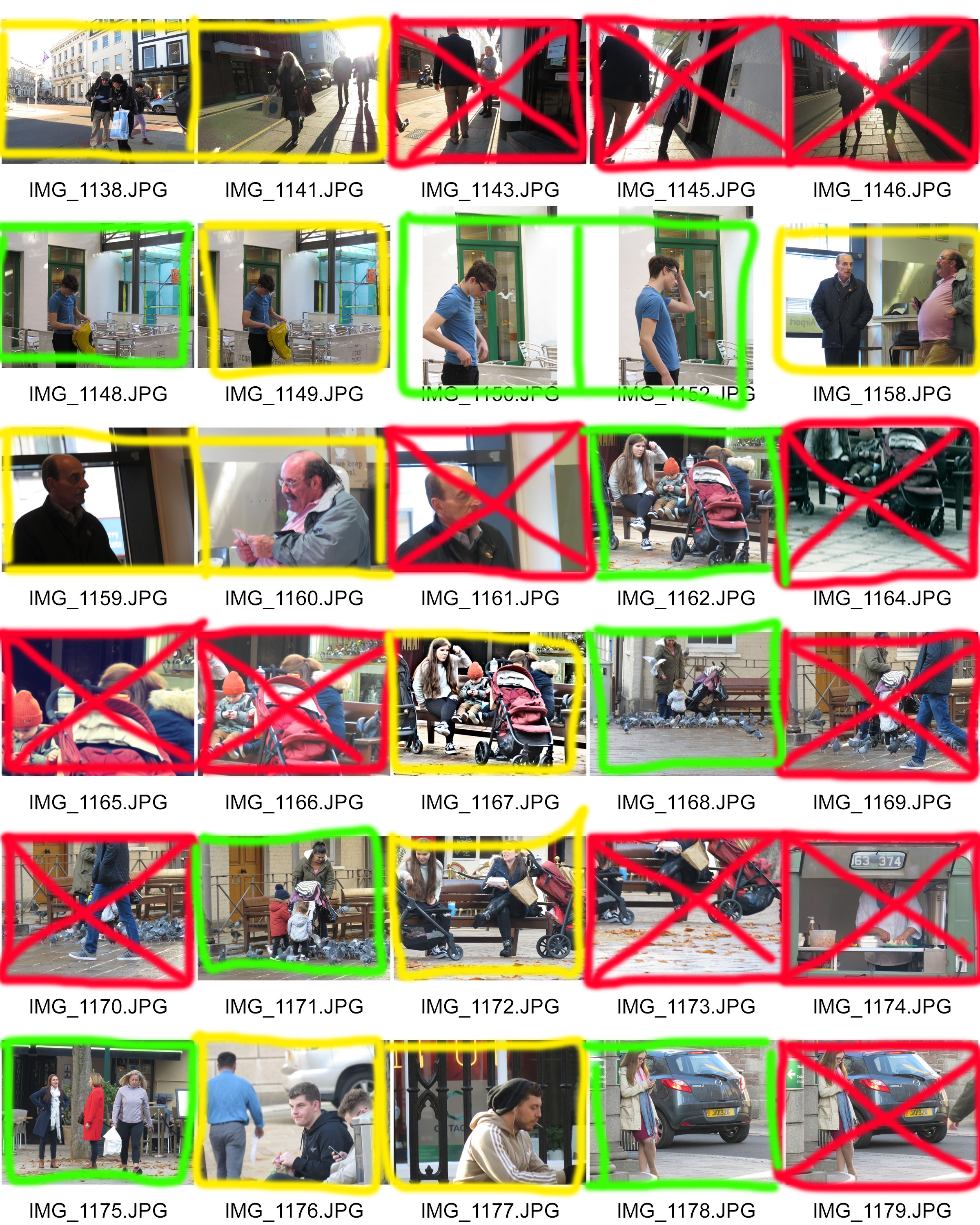

I was really happy with the outcome of some of my photographs as I got to see and now show how everyday people, whether it be tourists, young mum’s, people on their lunch break or people who work in the market serving others. But like every photo shoot I had some photos in there that I didn’t like as I was either too far away or there wasn’t a person in focus or the actual camera shot.
Case Study: August Sander
AUGUST SANDERS, BACKGROUND INFORMATION:
During military service, August Sander was an assistant in a photographic studio in Trier; he then spent the following two years working in various studios elsewhere. By 1904 he had opened his own studio in Linz, Austria, where he met with success. He moved to a suburb of Cologne in 1909 and soon began to photograph the rural farmers nearby. Around three years later Sander abandoned his urban studio in favor of photographing in the field, finding subjects along the roads he traveled by bicycle.
Sanders set out on a photographic project to document the people of his native Westerwald, near Cologne. Sander photographed subjects from all walks of life and created a typological catalogue of more than six hundred photographs of the German people. Although the Nazis banned the portraits in the 1930s because the subjects did not adhere to the ideal Aryan type, Sander continued to make photographs. After 1934 his work turned increasingly to nature and architectural studies.
MOOD-BOARD:
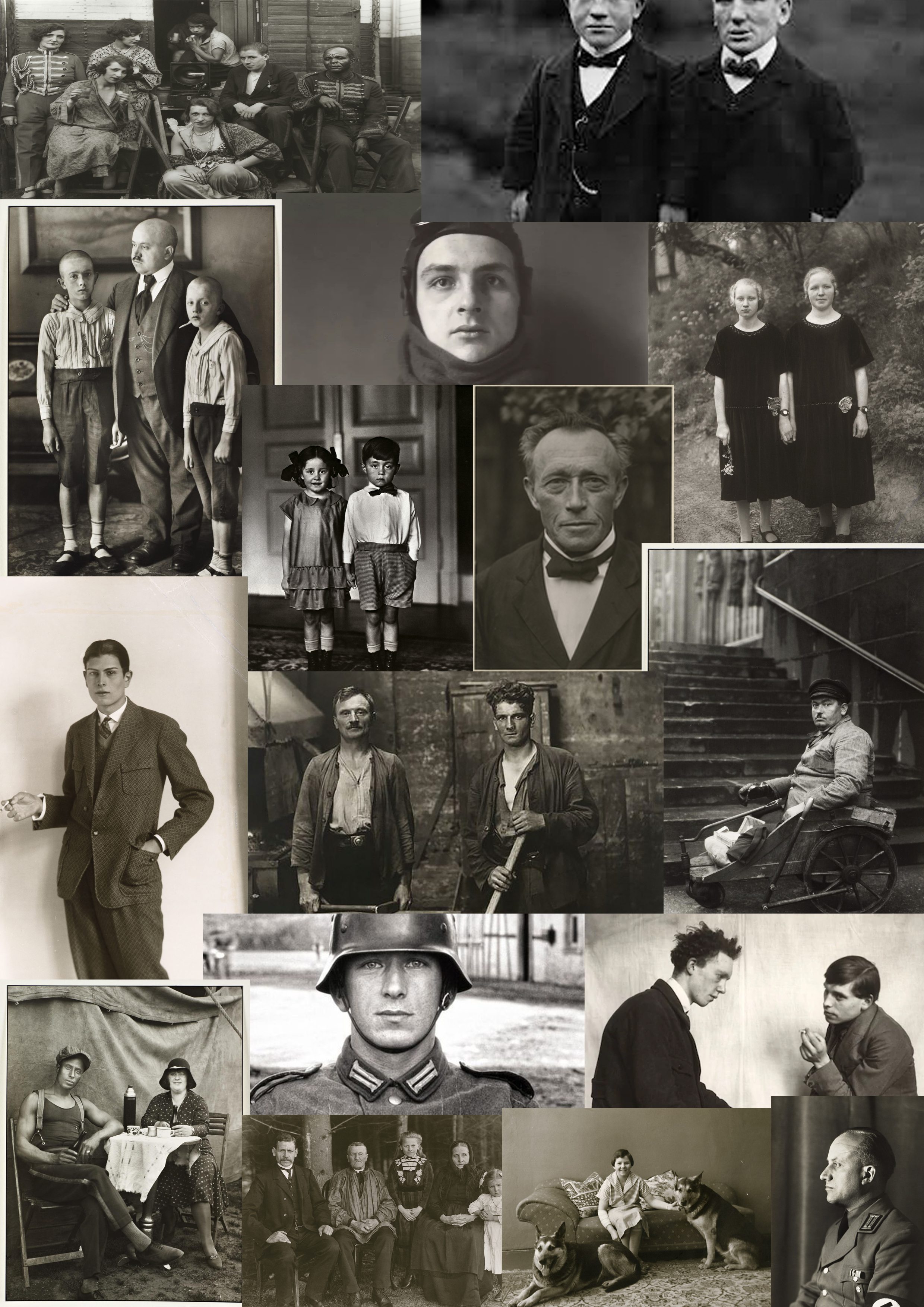
WORK ANALYSIS:
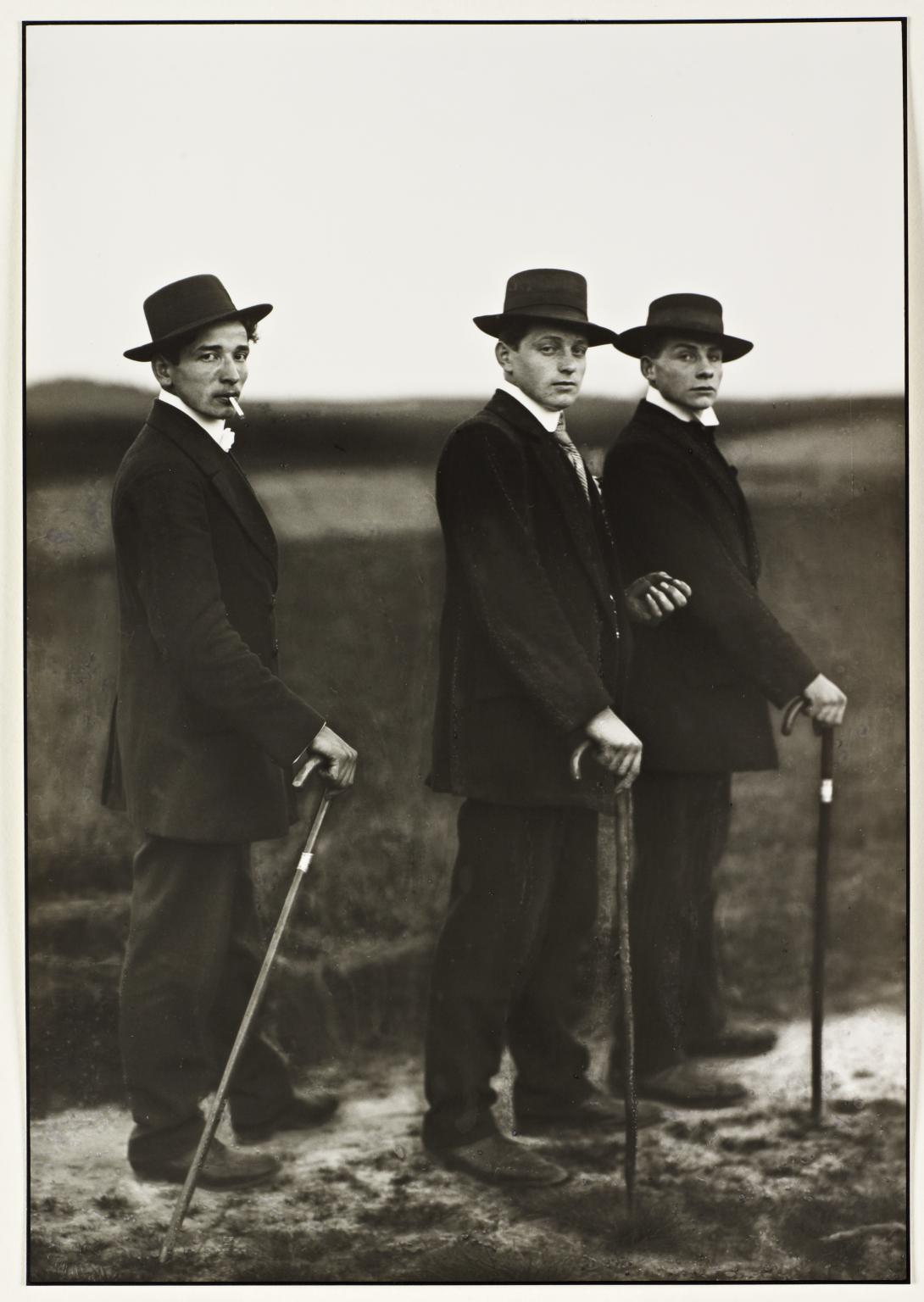
TECHNICAL:
The image picturing the young farmers is well exposed, slightly on the over exposed side as the bright white sky and highlights are very prominent in this image.
VISUAL:
This black and white photograph is a group portrait of three young men portrayed outdoors on a path in a natural setting. They stand behind each other in single file, their bodies facing in the same forward direction perpendicular to the picture plane, their heads looking to their right straight at the camera. All three of them wear suits and hats and gaze with some self-assurance directly at the photographer. The young man on the left has unkempt hair peeking out from his tilted hat, a cigarette dangling nonchalantly from his lips, and holds a wooden cane at an angle to the ground. The central figure is holding a cigarette in his left hand and clasps a cane in the other, while the man on the right and at the front of the group seems rooted to the spot, his cane held straight to the ground echoing his upright posture.
CONTEXTUAL:
The photograph was taken by August Sander using a large format, glass plate camera with a long exposure time, the kind primarily used in portrait studios. This is one of many photographs taken by him of rural people from the wooded low mountain region of Westerwald in the German federal states of Rhineland-Palatinate, Hesse, and North Rhine-Westphalia. Westerwald was the region where the photographer was born, and it was where he traveled in search of new clients after setting up his portrait studio in Cologne-Lindenthal in 1910, having returned to Germany the previous year from Linz, Austria.
Arnold Newman- Environmental portraits
About Arnold Newman and his photography
Arnold Newman who lived from 1918 to 2006 growing up through the war where some of his most famous pieces were produced. His career really began to develop when he began to focus his photography on to a particular type of photography called environmental photography in which he primarily worked for magazines. He would walk around carrying his camera and light to his subjects, capturing his participants in their surroundings. Newman was a renowned for photographing the distinguished famous faces at the time. Newman’s images often left plenty of room for interpretation from the viewer, allowing all types of opinions to flow in.
In 1963 after the war was over, Arnold Newman was commissioned by Newsweek magazine to take some photos of a German industrialist – Alfred Krupp. Which is now one of his most famous pieces at its said to capture an array of emotions and feelings to each individual looking at the image.
![]()
Emotional Response
When firstly looking at this image I was initially drawn to the strange man in the center, who was the German industrialist – Alfred Krupp. The photograph presents the man in the center of the image, with his hands clasps resting- fingers intertwined- resting his head on them. With his eye view looking straight into the camera, giving strong eye contact to the viewer, almost giving the impression of a threatening face. The way the shadows are formed demonstrations the mysteriousness radiating off Krupp face. The image helps represent the age of the man with his thin grey hair, brushed to one side and wrinkles speed across his forehead. Krupp is dressed in a smart suit grey suit and looking very presentable, giving the idea of high power and class at the time. He is sat at the front of what looks like a train station which is no longer in action. This is showed through the low maintenance and quality of the back ground functions. The contrasting in light shining through from the back emphasizes even more Krupp sat in the front of the trains, and helps darken Krupp’s even more, adding to the idea of curiosity of why Krupp is in the train station.
Technical Response
For this image it is color based which helps show the key details, for example textures and strongly emphasizes the differences between the foreground and background. There is a clear contracts between the foreground and back ground. With the background showing high exposure and there is an excess of natural sun light flushing in through the windows on to the old run down train station. This presents a more clear view of the train station and all its details, like the copper rust. These high quality leading lights seeping in assist the textures and colors used demonstrate rusting and really presents the idea of the station being extremely run down. This could lead our thought trail to why Krupp was photographed there. Due to the over exposure in the back ground somewhat draw or attention to the fore ground where Krupp is sat in much darker conditions. Thanks to the over exposure in the background and under exposure in the foreground help present the image with a range of shadows, which I believe aids the feeling of the image. The lens was most likely to be a wide lens to the varse amount of item and things in the image, the wide lens also shows the camera was facing pretty much straight on however the position of Krupp could suggest that it was a slightly higher up view.
Contextual Response
Knowing full well that Krupp was a strong Nazi follower and had preciously used his factory for slave labor in the Second World War in order to supply the army with Nazi war machines. Later on Krupp then got convicted of a numerous about of crimes and was due to serve twelve years in prison in which he was released after the third year. Newman initially turned down the offer from Newsweek commission however after a long debate with the editor Newman finally agreed to participate. On the side Newman had promised himself to portray Krupp for who he truly was ‘the devil’. On first appearance with a group of men associated with Krupp and his factories the portrait was canceled. Newman beloved this to of happened due to his appearance, this was an issue for Krupp as Newman was a Jewish. But after a long time convincing Newman finally persuaded the Krupp company to go on with the portrait. Newman’s ‘revenge’ was satisfied when the image was published and fully represented the evil behind the man.
Conceptual response
The concept of this piece was simply Arnold Newman’s revenge on Krupp for what he believed to be a ‘monster’ causing immense pain and chaos throughout the period he was upcoming. Newman intended to create this portrait in order to fully represent Newman’s true colour to the editors of the magazine and the public by producing an intense piece centred around Krupp himself being shined in a dark light.
Photographer Arnold Newman,
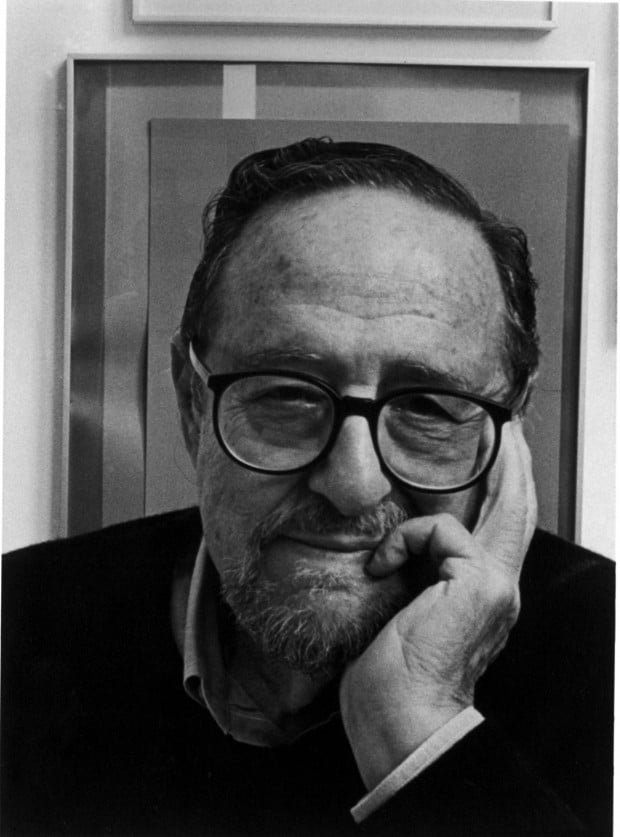
PLEASE MAKE SURE ALL SCHOOL CAMERAS ARE RETURNED BY MONDAY MORNING
People in their natural environment





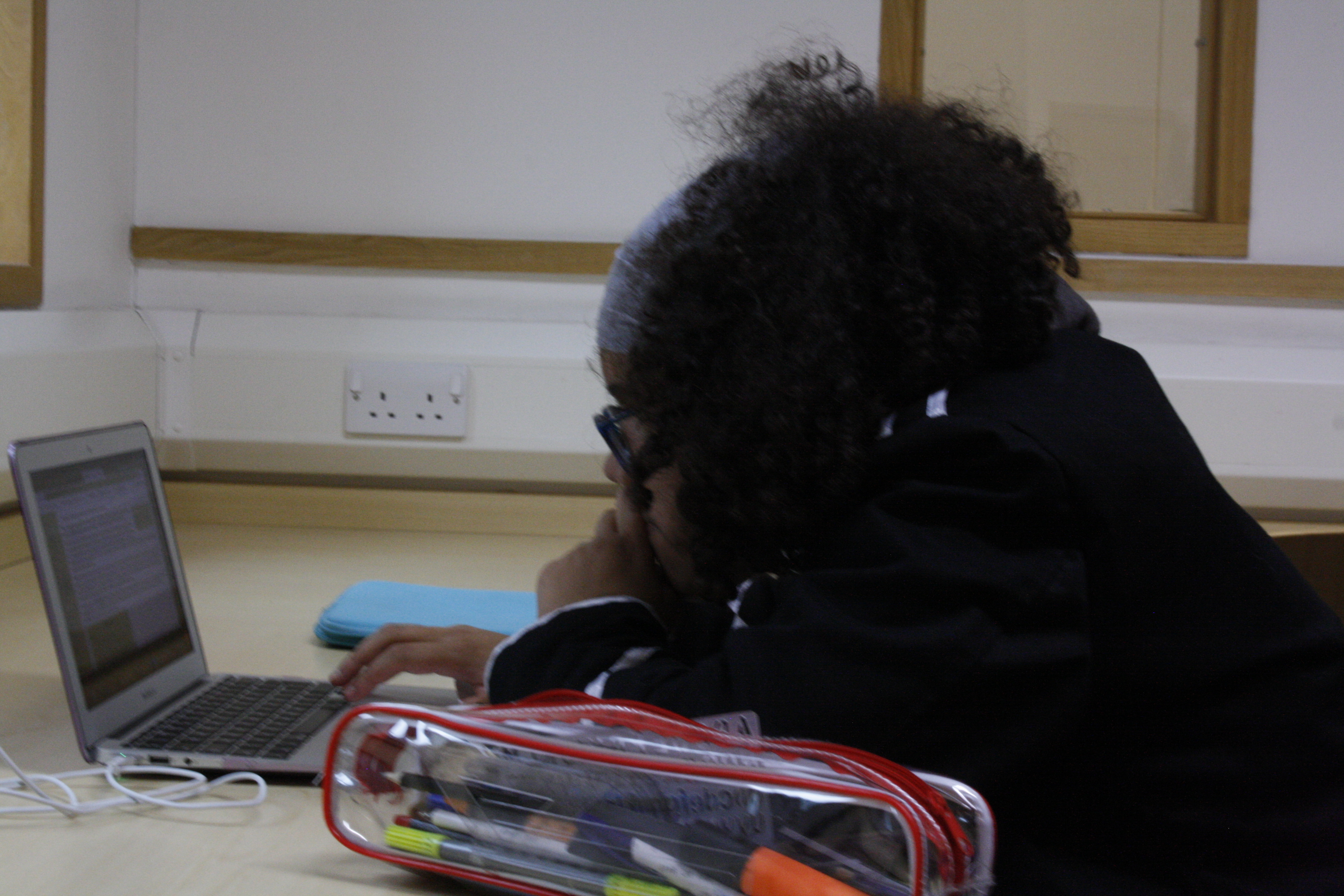
Street Photography
What is Street Photography?
Street Photography is a sub genre of photo-journalism focusing on portraits taken in an urban environment, mainly telling the story of the subjects. The photos are of a candid nature, meaning the subject is unprepared for the photo,and in some cases, unknowing, meaning they are pictured in their everyday form and arent influenced by the camera being pointed at them.
Mood Board

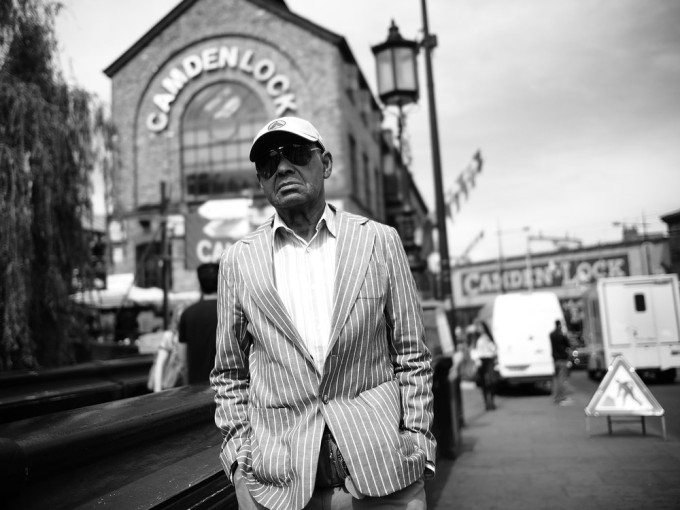
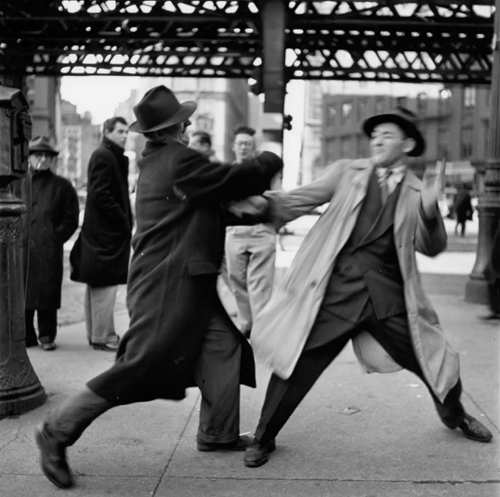
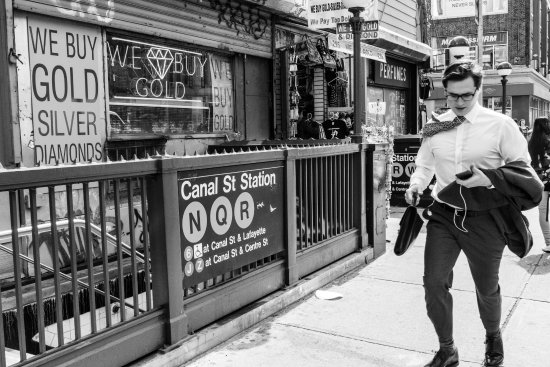
Shooting
For my shoot, I took to the local town and set about capturing various people in every day situations. I thought about potentially telling their story through a photo, as well as any context based upon the surroundings and the subjects apperaance. Here is a contact sheet of my selected images.,
Final Images
Here are my final images chosen from the whole shoot
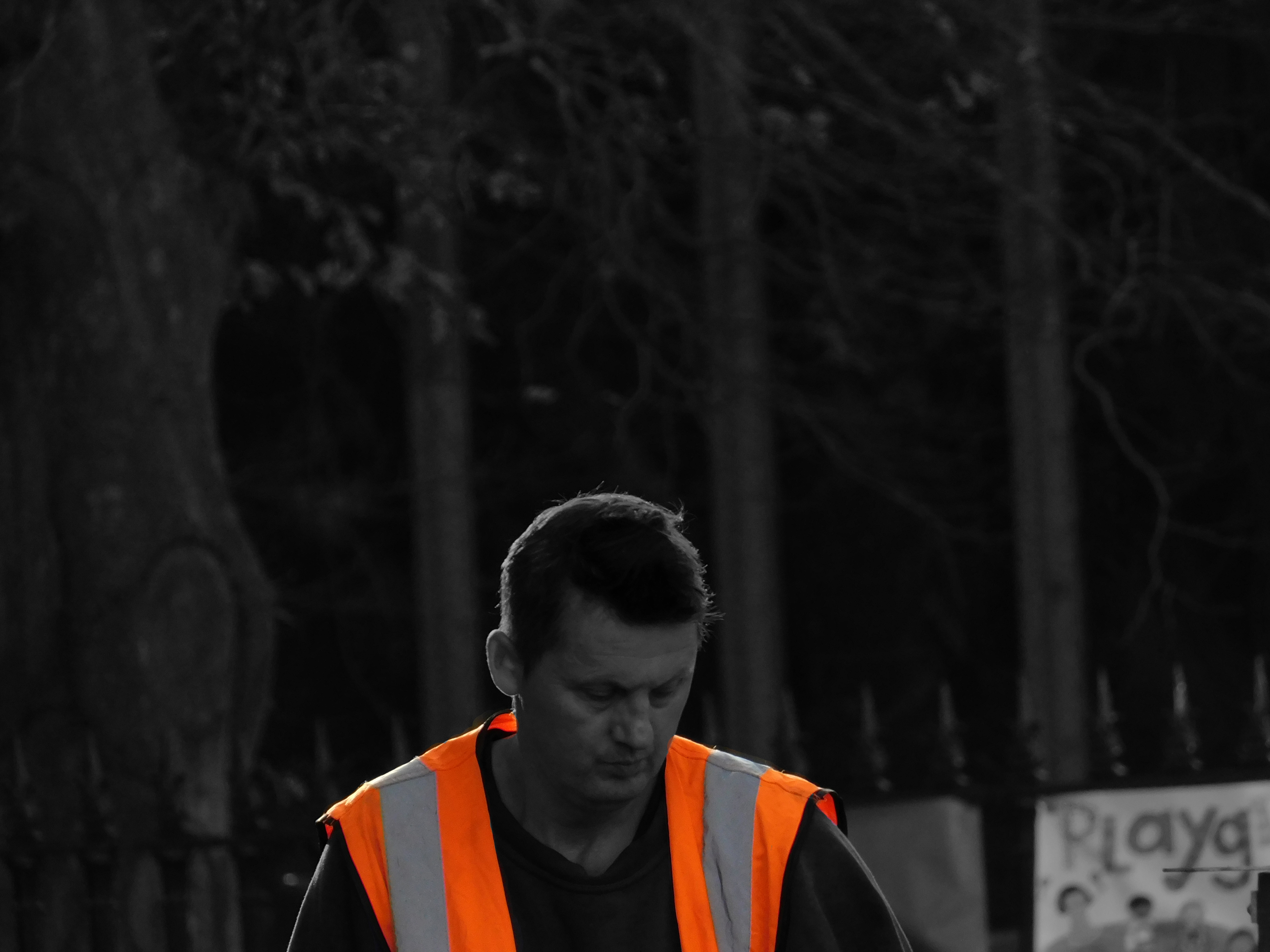
Head and shoulders of a labourer with the background desaturated and the only colour being his HI-Viz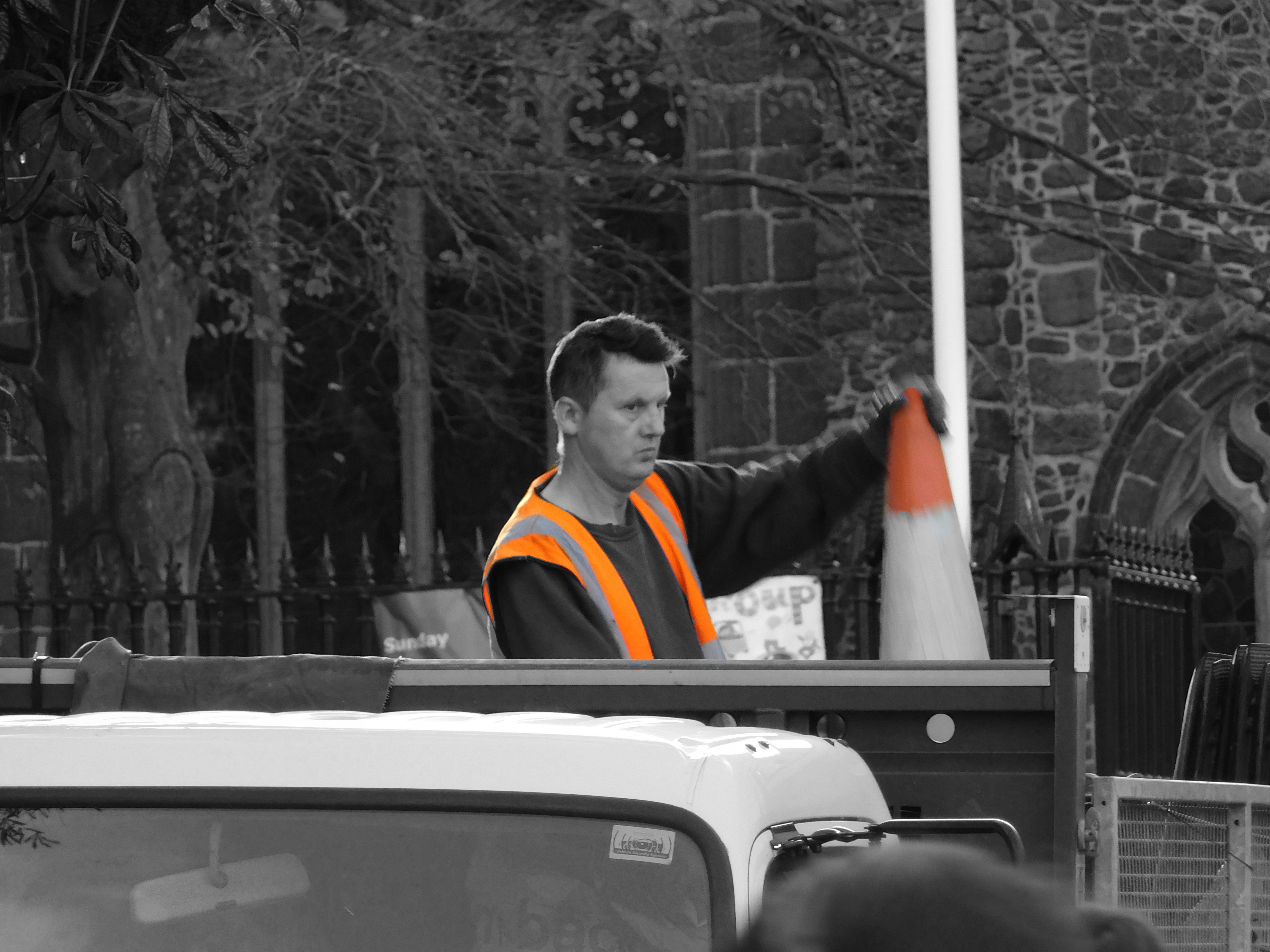
Same subject and technique as before, but holding a cone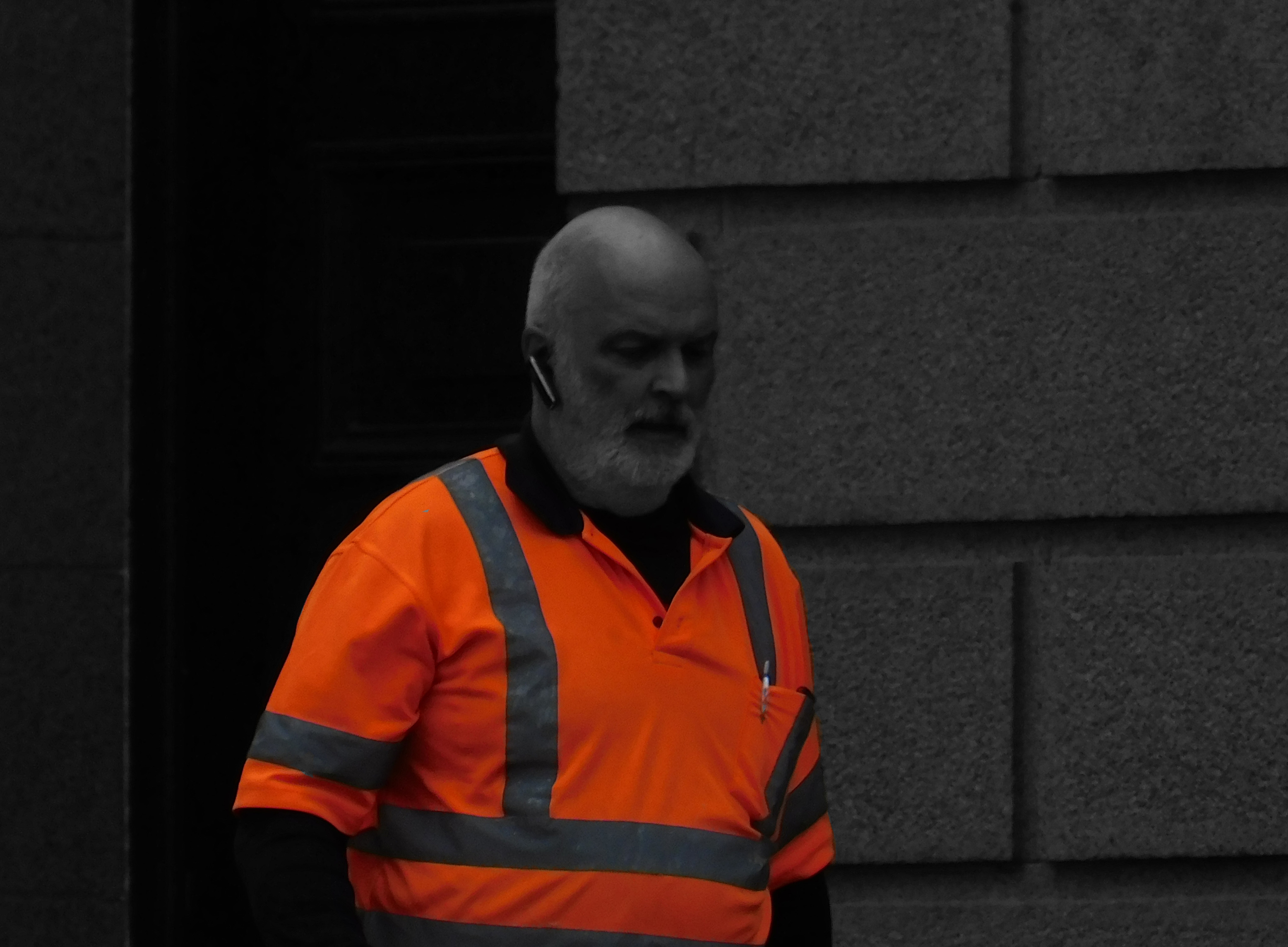 A different worker with lowered exposure and same method as first two
A different worker with lowered exposure and same method as first two
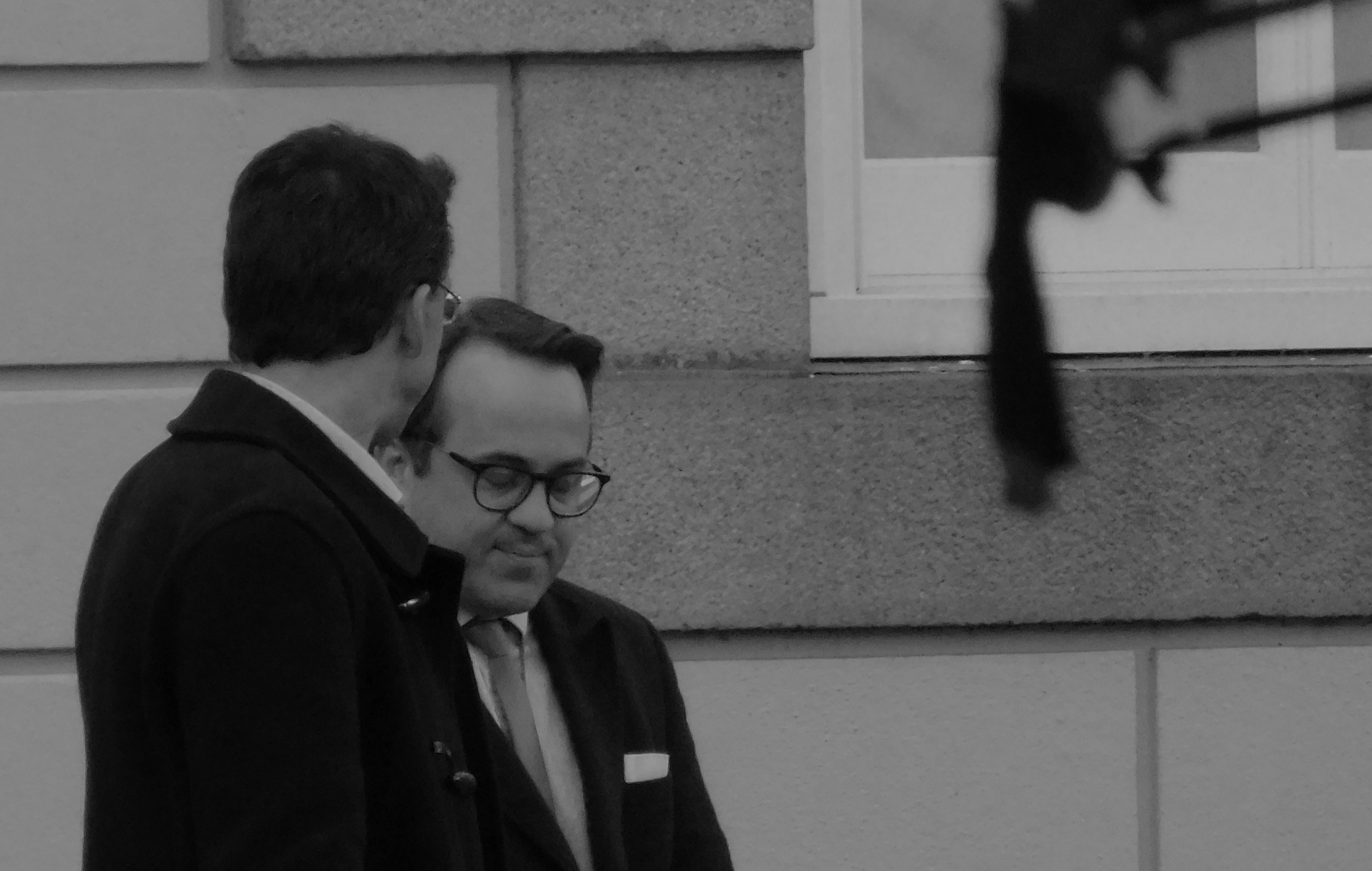
Two politicians or office workers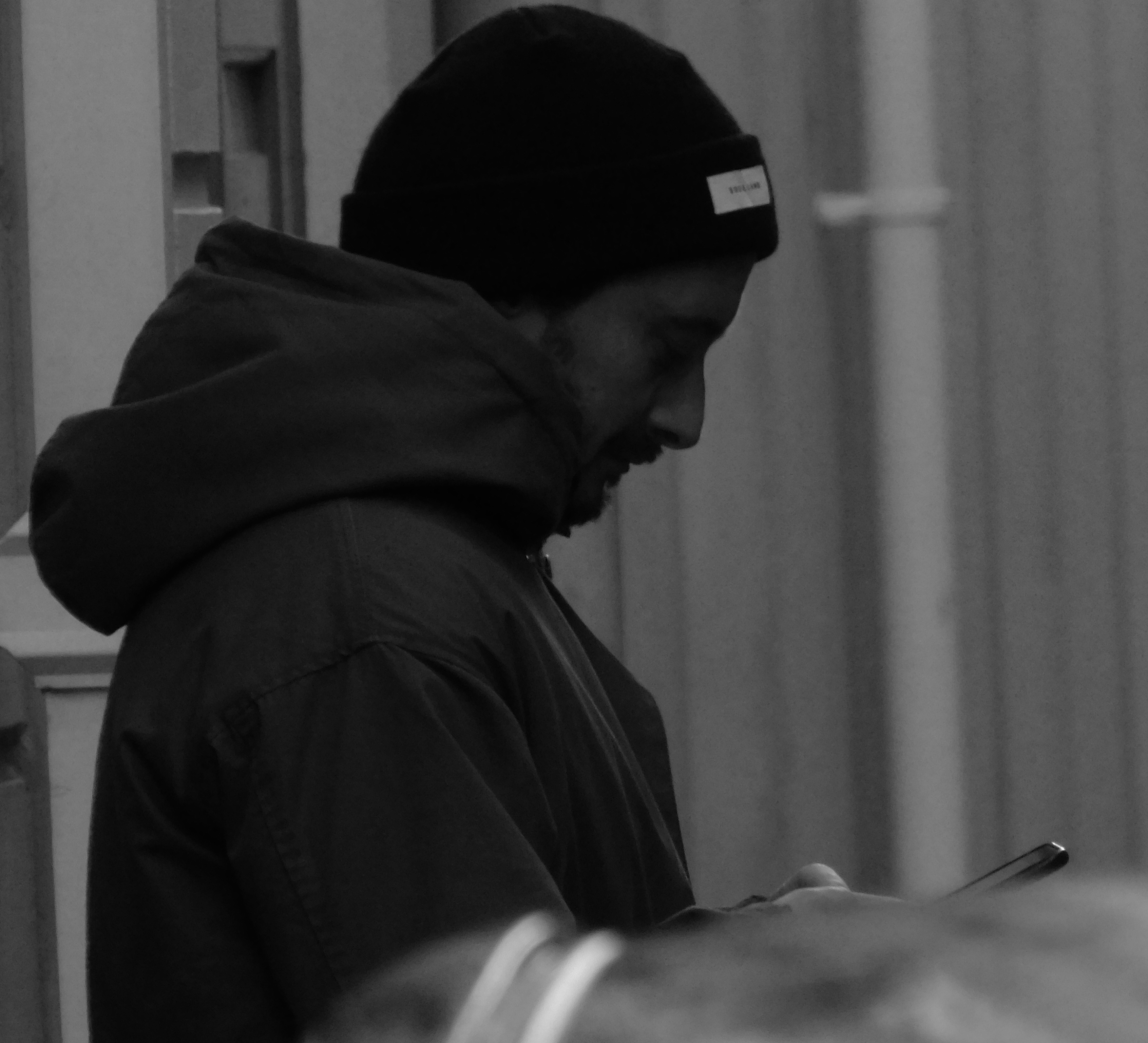
Coffee Break
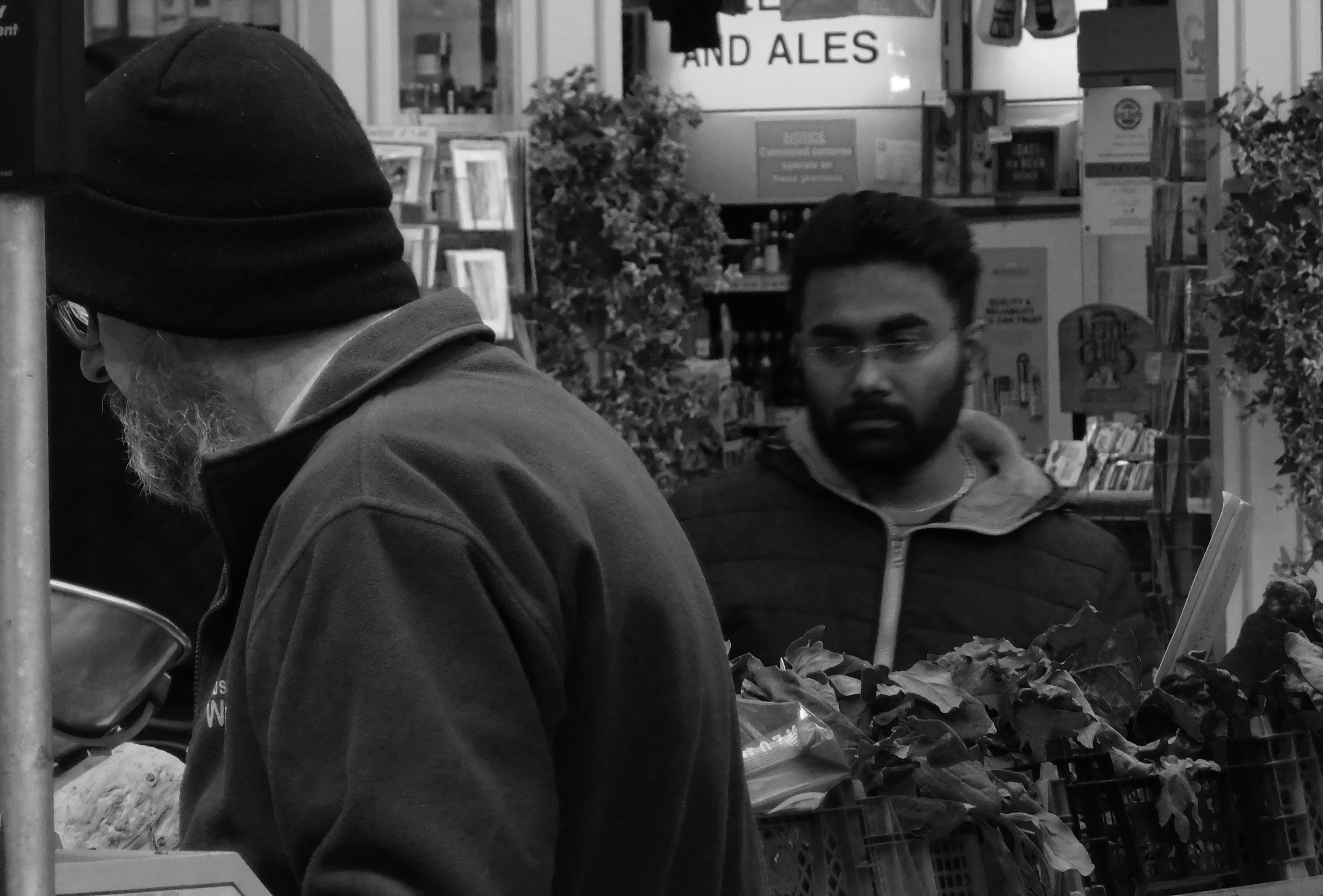 Market places + faces
Market places + faces
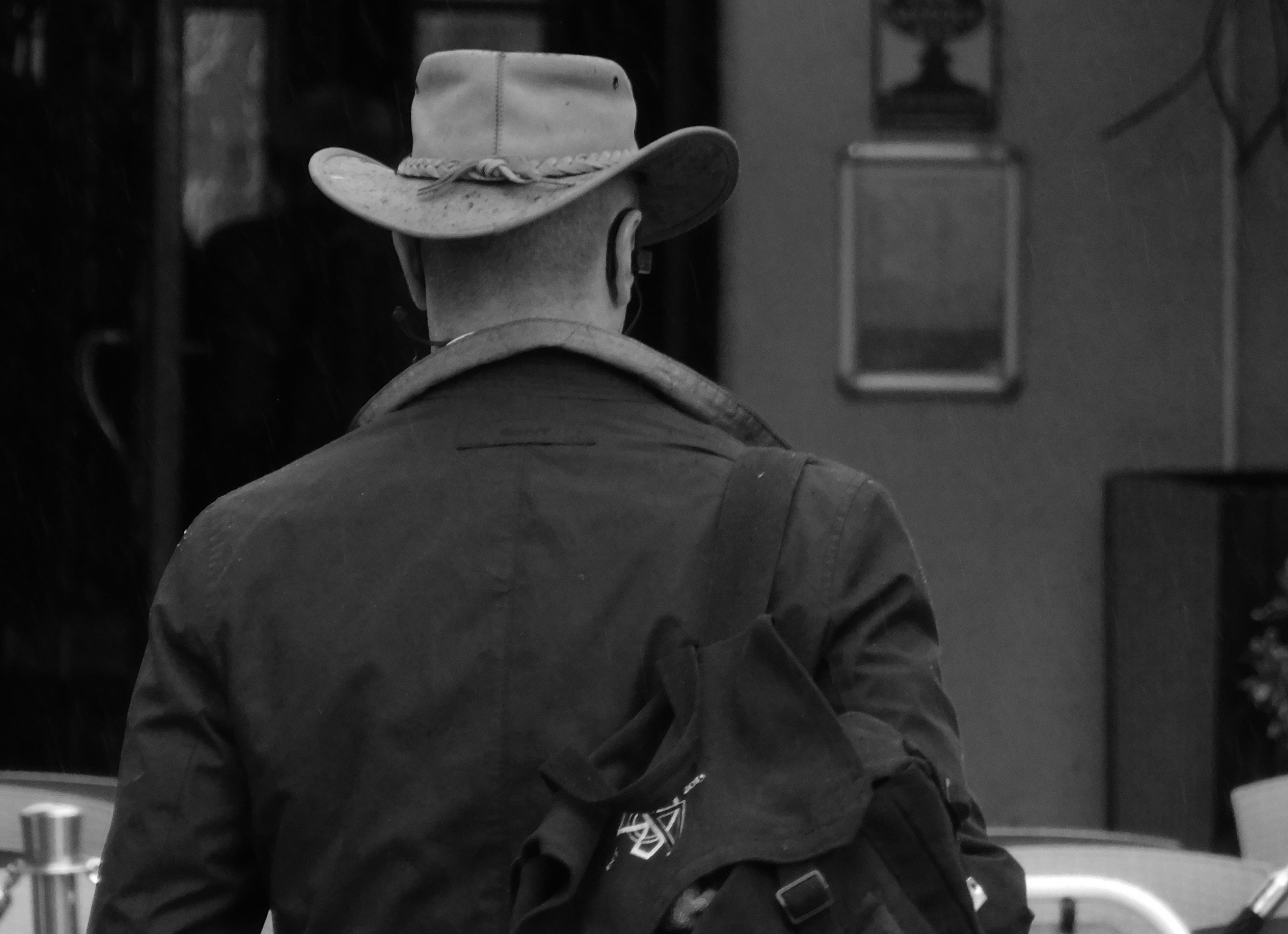
Cowboy hat in the rain

Dylan, taken with flash when greeting me
My Favourite Image
Here is my favourite image from the whole shoot. It is of a worker in his HI-Viz jacket and I decided to completely satire his surroundings apart from his jacket due to the luminous nature of it and the contrast when compared to black and white. I took the photo as the day I chose to carry the shoot out on was quite a dark and muggy day, so his Hi-Viz really stood out in the dismal surroundings.

What Is Street Photography ?
Street Photography (also referred to as Candid photography) is photography conducted for art or inquiry that features unmediated chance and random encounters. Street photography does not necessitate the presence of a street or even the urban environment. Though people usually feature directly, street photography might be absent of people and can be of an object or environment where the image projects a decidedly human character in facsimile or aesthetic.
Many famous street photographers include:
Henri Cartier-Bresson (1908-2004) He was a french photographer who mainly focused on using street photography on capturing a decisive moment using a 35mm film.
Helen Levitt (1913-2009) she was an American photographer who was particularly noted on using Street photography round New York, and was called “The most celebrated and least known photographer of her time”
Vivian Maier ((1926-2009) She was again an American photographer who worked for about 40 years as a nanny who pursued doing photography within her spare time, eventually become a well known street photographer.
How to undertake street photography.
In order to successfully complete a street photography photo shoot, you will need to sit in a busy area but where you can still have a clear view on some people to photograph. It is better to have no relationship with the people that you are photographing so you can get their natural emotions as they would act without the use of a camera to capture the moment. You can either walk around and take photos or find a place to sit down and take photos from the same position.
Personally I would recommend sitting down and taking photos in an area with quite a few people that circulate around the area. This is because you can have time to set up the camera and focus on the model you are photographing, whereas if you are walking around it is hard to focus on a person/people and you may not have the perfect aperture or ISO set on the camera, as I found out during this shoot. I also realised that if you aren’t positioned in an area, and are walking around then people may realise that you’re taking a photo of them, therefore act differently to fit into the social desirability bias.

